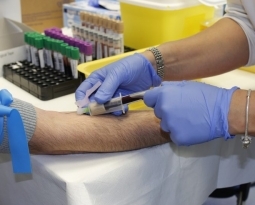Amazon BMI Scanner Proves Accurate
Amazon has developed a body fat percentage scanner that works using your phone camera. Studies have recently come out showing that it is actually more accurate than the traditional measurement techniques.
This scan product is a part of Amazon’s Halo Body Feature, wherein the user takes four photos of their bodies. These are merged into a single 3D image and an algorithm uses this to calculate the user’s body fat percentage.
The study used data collected at two sites: Massachusetts General Hospital and Pennington Biomedical Research Center at Louisiana State University. It had 134 participants of varying body types and included 82 women and 52 men. Of the group, 81 were Caucasian, 32 were Black, nine were Asian, four were Hispanic, one was American Indian, and seven were multiracial. It’s a small number of people, but that’s typical with this type of research, which has to run people through expensive and unwieldy tests, Thomas says.
Each person in the study had their body fat percentage calculated through an X-ray technique that shows fat distribution through the body called dual-energy X-ray absorptiometry (DXA), which is the gold standard. The results from those scans were compared to the Amazon system, five scales that calculate body fat (two professional and three consumer), and something called air displacement plethysmography — which uses a pod-shaped device that measures how someone’s body displaces the air.
The study found that the body fat percentages calculated by Amazon Halo Body were closest to those calculated by DXA. It performed better than the air displacement plethysmography device, which is often used to calculate body fat by people studying weight and body composition, but is cumbersome and tricky to conduct correctly. The pods are expensive, have to be housed in a lab, and require people to wear swim caps and tight-fighting clothing.
While more validation studies are needed, developments like this can really restructure sectors of research. If accurate BMI is more readily available then body composition research faces one less limitation.
Are you developing new software for an existing application? Did you know your development work could be eligible for the R&D Tax Credit and you can receive up to 14% back on your expenses? Even if your development isn’t successful your work may still qualify for R&D credits (i.e. you don’t need to have a patent to qualify). To find out more, please contact a Swanson Reed R&D Specialist today or check out our free online eligibility test.
Who We Are:
Swanson Reed is one of the U.S.’ largest Specialist R&D tax advisory firms. We manage all facets of the R&D tax credit program, from claim preparation and audit compliance to claim disputes.
Swanson Reed regularly hosts free webinars and provides free IRS CE and CPE credits for CPAs. For more information please visit us at www.swansonreed.com/webinars or contact your usual Swanson Reed representative.

















